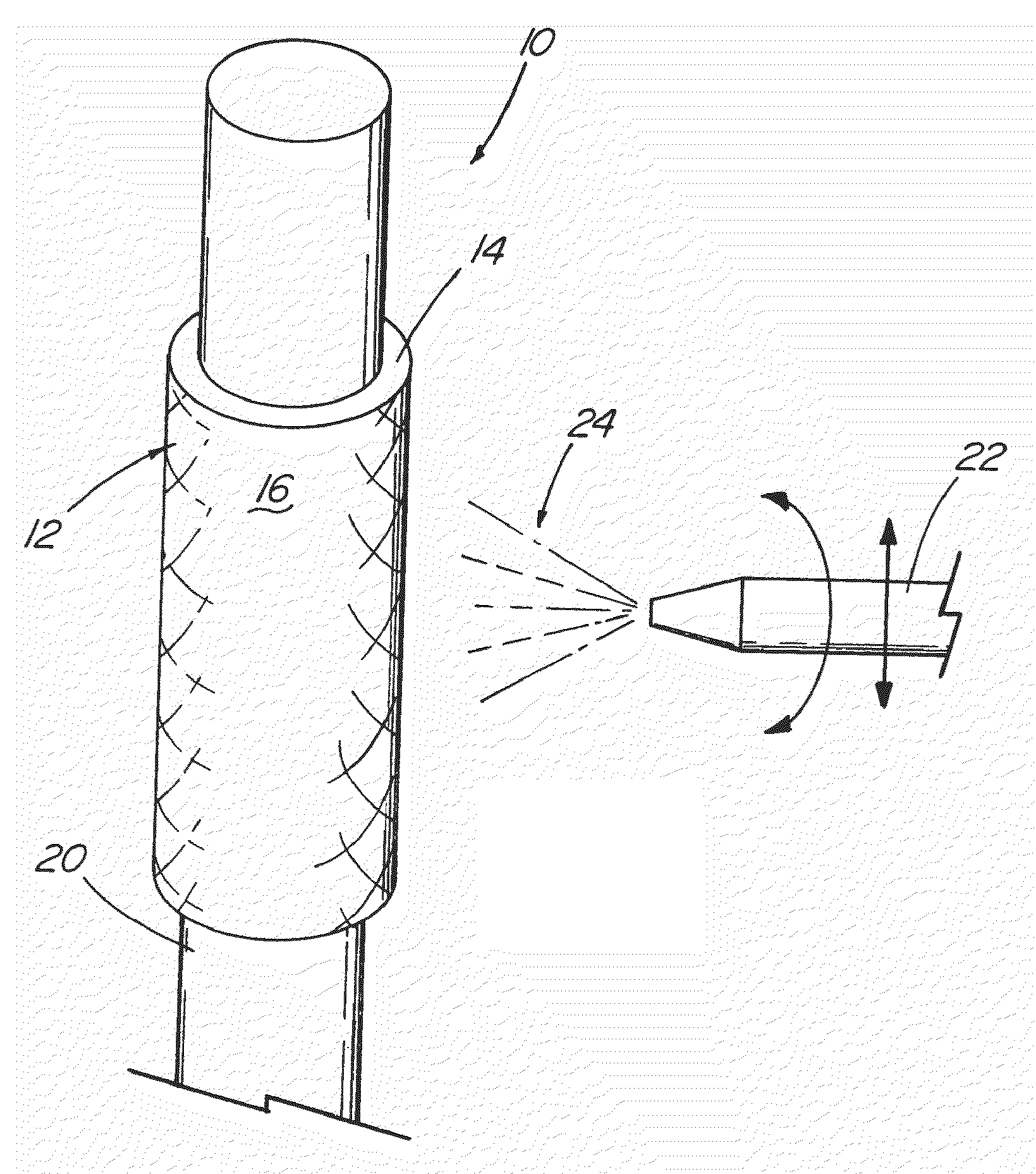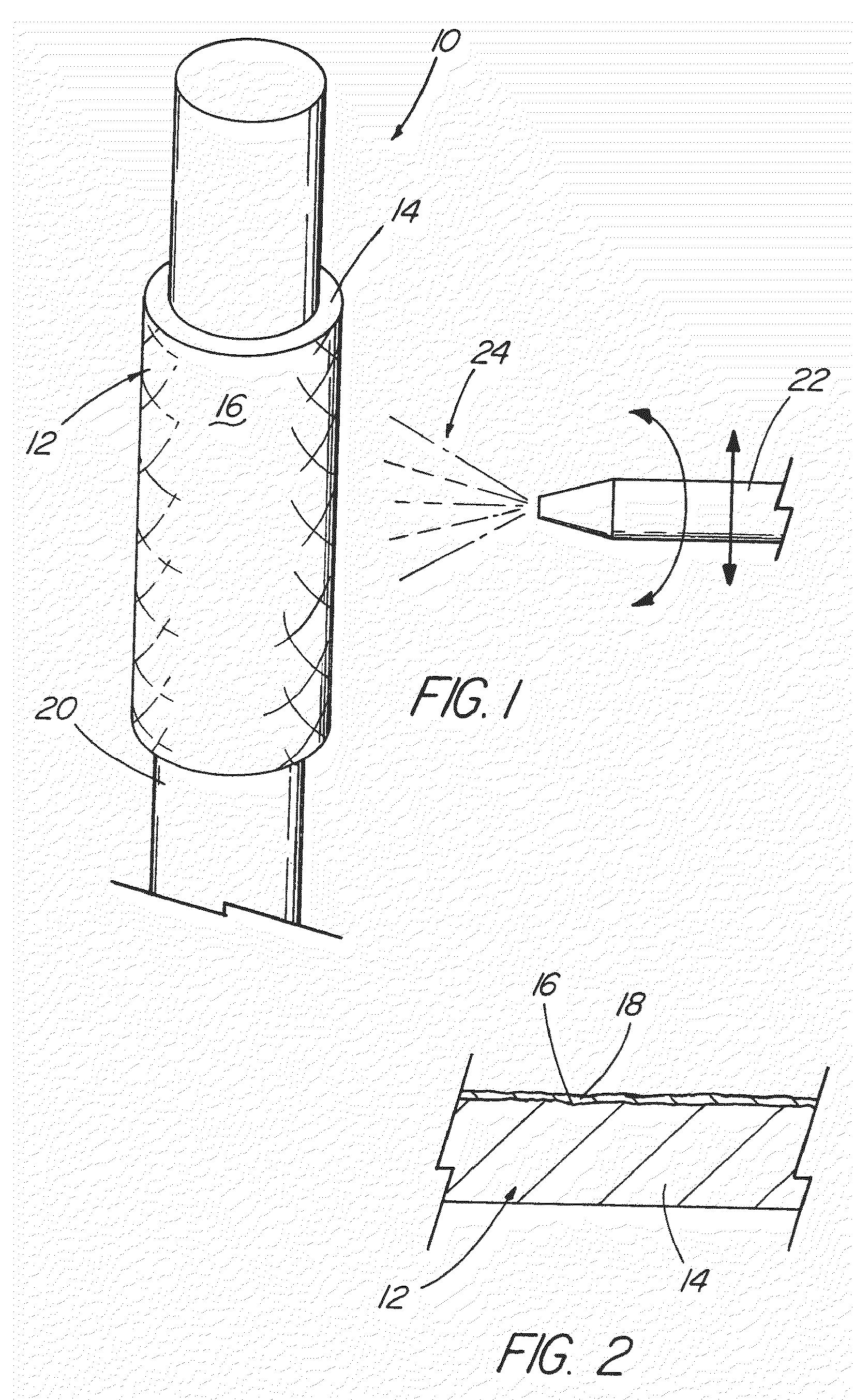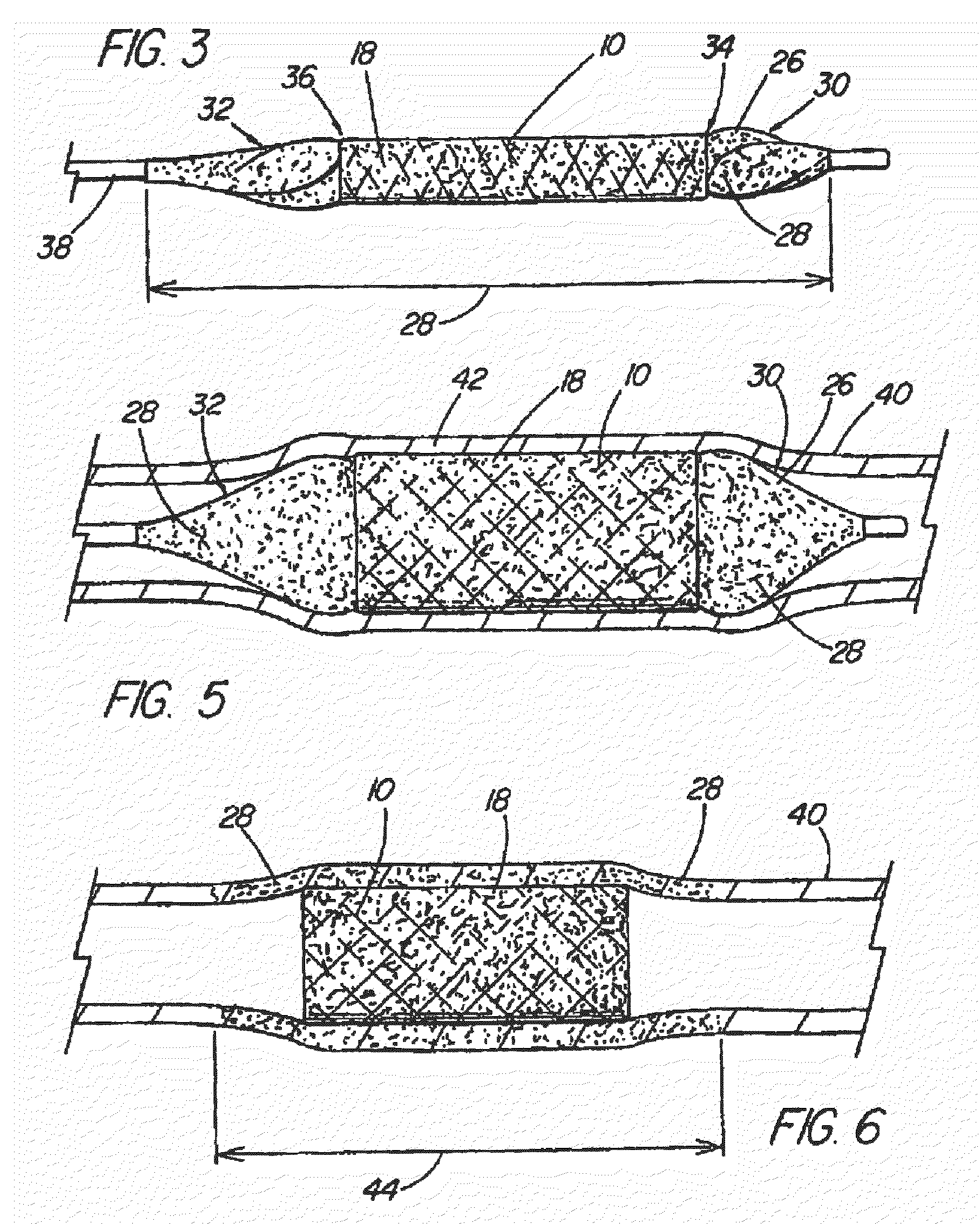Coated medical device
a medical device and coating technology, applied in the field of human and veterinary medical devices, can solve the problems of inability to absorb bioactive materials, suffer an unacceptable amount of loss, etc., and achieve the effects of low toxicity of sodium bicarbonate, low cost of manufacture, and low cost of medical devices of the present invention
- Summary
- Abstract
- Description
- Claims
- Application Information
AI Technical Summary
Benefits of technology
Problems solved by technology
Method used
Image
Examples
Embodiment Construction
[0042]With reference now to the Figures, an implantable medical device 10 in accordance with the present invention is thereshown. The medical device 10 of the present invention first comprises a structure 12 adapted for temporary or permanent introduction into a human or veterinary patient. “Adapted” means that the structure 12 is particularly configured, shaped and sized for such introduction. By way of example, the structure 12 is most preferably configured as a vascular stent adapted for insertion into the vascular system of the patient.
[0043]The structure 12 can of course be particularly configured for use in other systems and sites such as the esophagus, trachea, colon, biliary ducts, urethra and ureters, among others. Indeed, the structure 12 can alternatively be configured as any conventional vascular or other comparable medical device, and can include any of a variety of conventional stent or other adjuncts, such as helically wound strands, perforated cylinders or the like. ...
PUM
| Property | Measurement | Unit |
|---|---|---|
| half life | aaaaa | aaaaa |
| surface roughness | aaaaa | aaaaa |
| particle size | aaaaa | aaaaa |
Abstract
Description
Claims
Application Information
 Login to View More
Login to View More - R&D
- Intellectual Property
- Life Sciences
- Materials
- Tech Scout
- Unparalleled Data Quality
- Higher Quality Content
- 60% Fewer Hallucinations
Browse by: Latest US Patents, China's latest patents, Technical Efficacy Thesaurus, Application Domain, Technology Topic, Popular Technical Reports.
© 2025 PatSnap. All rights reserved.Legal|Privacy policy|Modern Slavery Act Transparency Statement|Sitemap|About US| Contact US: help@patsnap.com



